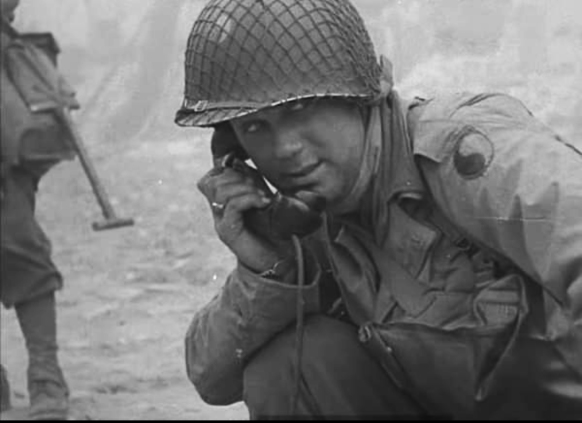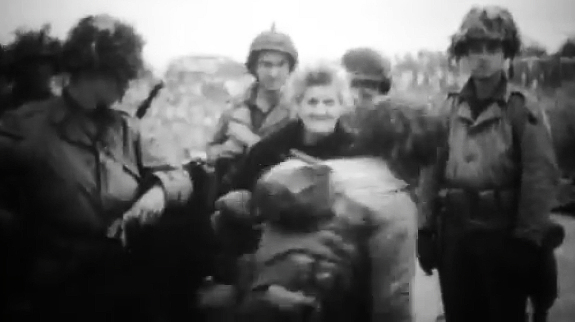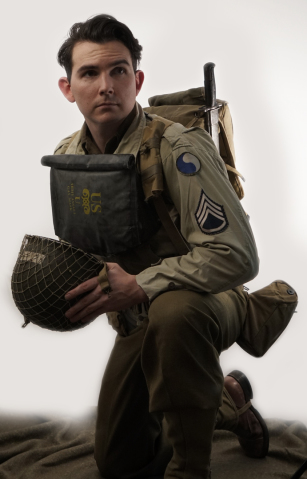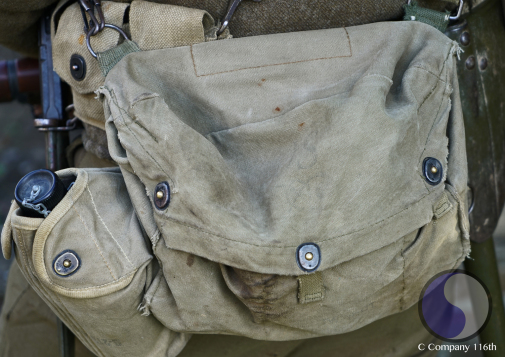
Gas Mask Bags
For the initial landings the 29th division was issued with the rubberised assault gas mask bag which was strapped to the chest, This bag was designed to protect the gas mask from the salt water of the channel as this would cause the masks seal to perish quickly. The bag itself is not the most tactical of colours being of a grey-black colour. What we find is that these assault gas mask bags were exchanged for the M6 gas mask bag at the next available opportunity, though we see photographs of the assault gas mask bag being worn in the St. Lo area.
This still is from a film reel in St. Lo and shows this GI using a field telephone. He is wearing the assault gas mask bag under his left arm with the opening towards his chest. This is how the early war kidney shaped gas mask bag was worn and allows the gas mask to be quickly removed from the bag and fitted to the face.
Assault gas mask bags have been dug out of fox holes around Hill 108 and the age old belief that these bags were discarded on the beach is incredibly incorrect. Evidence of the assault gas mask bag is found as far as late July 1944 with the 29th Division and not just with the 116th but the 175th as well who were not 1st wave assault troops.
When it is seen in film reels or photographs it is usually worn under the left arm like it is here or on the back.
By the time the 29th are coming up to St Lo, we have many example images of GI’s wearing the M6 bag, as this was most likely a standing order to always have the gas mask at hand. It is also common for the bag to have been used as a carry bag for extra ammunition, clothing or rations. The M6 bag was made in the OD3 and OD7 colours depending on production date, OD7 bags would have been around in 1944 but in limited quantities, therefore we usually apply the rule of OD3 for 1944 period events and either OD3 or 7 for 1945 but this is just to portray the most common appearance. Having an OD7 M6 bag for St Lo isn’t incorrect though it was much more common for the OD3 M6 to be issued.
The M6 bag was worn over the left or right shoulder with the pack swung to the rear usually, some of the best pictures of GI’s with the pack are seen in the bocage. In the few images we have of assault gas mask bags being used after the initial landings they are worn much like the early kidney style bag under the arm.
The Assault gas mask bag was put on first and worn under the assault vest or webbing. Thisnot also allowed the webbing to be removed quicker in the event of falling in the ocean but also was supposed to act as a bouyancy aid, though images from June 6th show the gas mask bag being worn over the webbing in the odd occasion however these photographs do not show the 29th Division.





